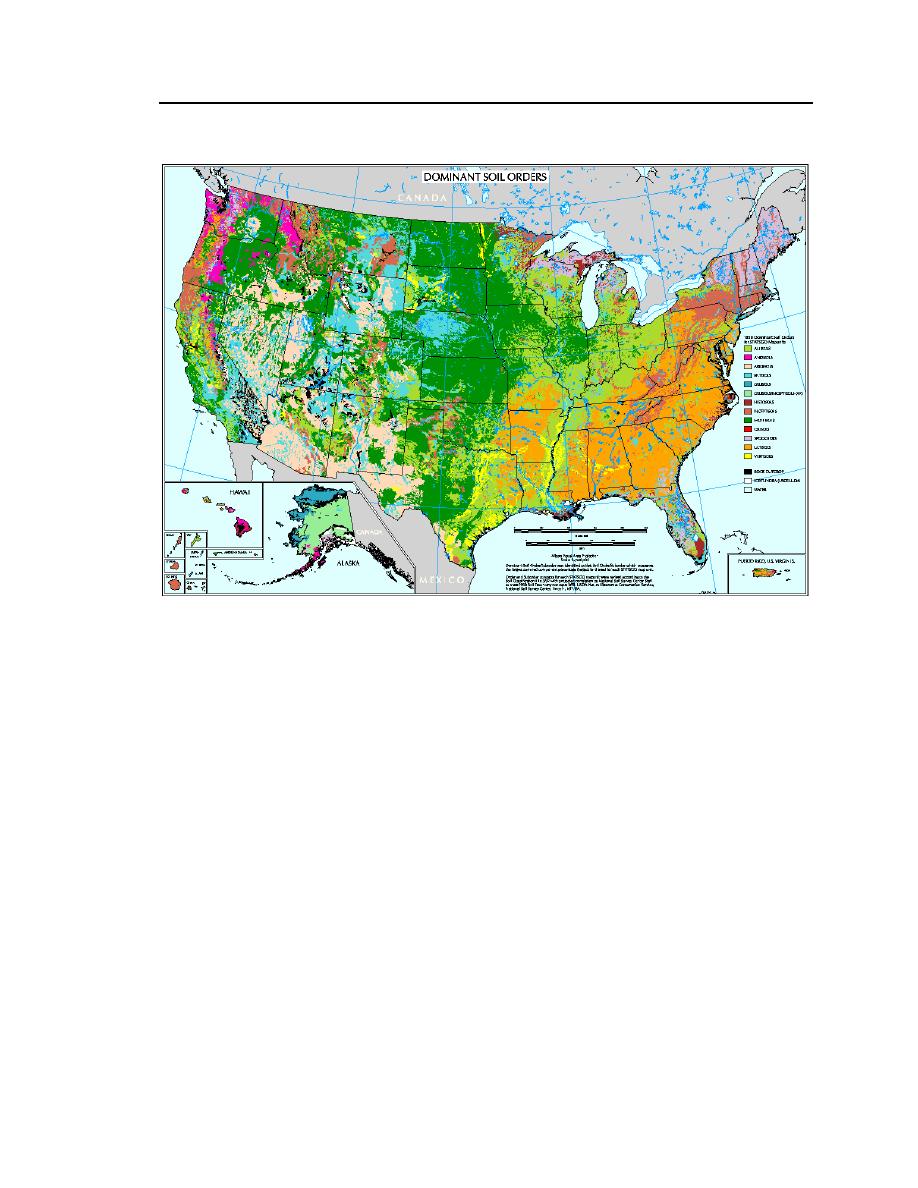
Chapter 2. Hydrology
27
Figure 8. Soils map of the United States. (From http://www.nrcs.usda.gov/technical/land/
lgif/m4025l.gif.)
is available for runoff) in extremely arid climates where little vegetation is
present. When plants are present, interception is possibly more significant in arid
climates for the same vegetation density, because many desert plants are adapted
to maximize stemflow (i.e., they catch and focus rainfall towards the trunk or
stem) (Pressland 1975). Forest fires, an important and recurring phenomenon in
the Southwest, result in temporally variable interception rates in forested water-
sheds. Beyond these generalizations, little is known about interception in arid
regions, and more data must be collected to improve modeling of rainfallrunoff
relationships (Pilgrim et al. 1988).
Evapotranspiration accounts for 95% of precipitation in arid regions, with
evaporation being far more significant than transpiration given the high
percentage of bare ground (Pilgrim et al. 1988). The likelihood that soils will dry
out between infrequent storm events precludes the need, in most cases, to
consider antecedent moisture conditions when modeling rainfallrunoff
processes.



 Previous Page
Previous Page
